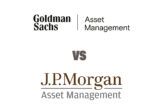Divergence in the emerging world is becoming more evident due to tightening US monetary policy and falling commodity prices. The reforms anticipated in many emerging markets next year are only likely to accentuate this divergence.
Satellites of the eurozone and Asia will likely import dovish monetary policies from the European Central Bank and Bank of Japan, respectively, and will have room to cut rates to spur growth.
Brazil and Russia might have to hike rates to defend their currencies. Others, including Mexico and China, stand to gain from US economic momentum.
What these diverse countries have in common is that traditional export models are challenged, with export growth essentially flat for the past three years. The reasons are weak global demand from the developed world and a deceleration in the emerging world’s locomotive — China.
Weak emerging market currencies and equity prices have offset the lack of export growth to some extent. Yet countries could do more to unlock their potential: improve infrastructure, institutions and education, and enact reforms to make their economies more competitive.
We prefer countries implementing reforms to open up their economies; a little reform can go a long way in boosting asset values.
Emerging market equity valuations are generally cheap, relative to both developed market stocks and their own history, but company selection will remain key to effective strategies in this sector.
The two EM giants
India and China are still growing at very high absolute levels, however, and both countries are
relaxing monetary policy. China’s growth is coming off an ever larger base, meaning its absolute demand for commodities and machinery is still increasing.
A little reform can go a long way-especially if starting expectations are low.
China’s leaders are (gently) tapping the growth brakes as they attempt their biggest reform since the 1980s: Cutting the economy’s dependence on investment and raising the share of consumption.
There are plenty of subtleties along the way: China’s recent interest rate cut was the latest in a series of targeted easing measures to loosen financial conditions and provide a stable growth foundation for structural reforms.
Rate cuts often have come in a series, accompanied by fiscal stimulus. We could see this scenario play out again.
We see economic growth and demand for resources slowing, but not falling off a cliff. Remember growth is coming off an increasingly large base.
High growth is not necessarily good for markets. China’s economy powered ahead in the new millennium, yet equities underperformed as structural problems such as over-investment increased.
The trading link between the Shanghai and Hong Kong stock exchanges over time should boost investor confidence in China’s domestic markets and increase their index weighting.
Falling property prices, a string of scandals surrounding asset-backed securities schemes and cheap valuations make equities look (relatively) attractive to domestic investors.
India is riding a wave of optimism after pro-business Narendra Modi won the elections. Indian debt looks like good value with inflation falling. Robust earnings growth supports (pretty heady) equity valuations, but visible progress on reforms is needed for markets to advance further.
Global snapshot on 2015
Caution will previal next year, the BII said.
“Pockets of [market] volatility are likely,” said Ewen Cameron Watt, BII’s global chief investment strategist.
“It’s key for investors to develop a plan to prepare for a return to a more normal volatility regime.”
“Readiness rules in 2015. Equity and fixed income markets could fall in tandem, challenging traditional diversification. Relative value strategies and alternative investments can help.”
The BII’s investment ideas for 2015
· We like Japanese and European equities due to cheap valuations and monetary boosters. We favor US cyclicals over defensives as the Fed tightens monetary policy.
· We prefer credit such as US high yield and European bank debt over sovereign debt. We like hard-currency EM debt, and favor US treasuries over other safe-haven bonds.
· We like income-paying real assets such as property and infrastructure, but want to get compensated for being illiquid.
· Our contrarian idea: beaten-up natural resources equities as a hedge if US dollar strength fades.
















